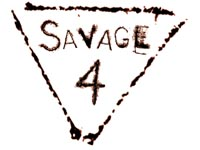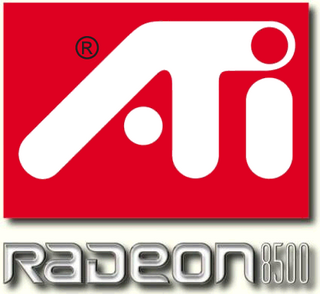This article has multiple issues. Please help improve it or discuss these issues on the talk page . (Learn how and when to remove these template messages)
|
Transform, clipping, and lighting (T&L or TCL) is a term used in computer graphics.
This article has multiple issues. Please help improve it or discuss these issues on the talk page . (Learn how and when to remove these template messages)
|
Transform, clipping, and lighting (T&L or TCL) is a term used in computer graphics.
Transformation is the task of producing a two-dimensional view of a three-dimensional scene. Clipping means only drawing the parts of the scene that will be present in the picture after rendering is completed. Lighting is the task of altering the colour of the various surfaces of the scene on the basis of lighting information.
Hardware T&L had been used by arcade game system boards since 1993, [1] and by home video game consoles since the Sega Genesis's Virtua Processor (SVP), Sega Saturn's SCU-DSP and Sony PlayStation's GTE in 1994 and the Nintendo 64's RSP in 1996, though it wasn't traditional hardware T&L, but still software T&L running on a coprocessor instead of the main CPU, and could be used for rudimentary programmable pixel and vertex shaders as well. More traditional hardware T&L would appear on consoles with the GameCube and Xbox in 2001 (the PS2 still using a vector coprocessor for T&L). Personal computers implemented T&L in software until 1999, as it was believed faster CPUs would be able to keep pace with demands for ever more realistic rendering. However, 3D computer games of the time were producing increasingly complex scenes and detailed lighting effects much faster than the increase of CPU processing power.
Nvidia's GeForce 256 was released in late 1999 and introduced hardware support for T&L to the consumer PC graphics card market. It had faster vertex processing not only due to the T&L hardware, but also because of a cache that avoided having to process the same vertex twice in certain situations. While DirectX 7.0 (particularly Direct3D 7) was the first release of that API to support hardware T&L, OpenGL had supported it much longer and was typically the purview of older professionally oriented 3D accelerators which were designed for computer-aided design (CAD) instead of games.
Alladin's ArtX integrated graphics chipset also featured T&L hardware, being released in November 1999 as part of the Alladin VII motherboards for socket 7 platform. [2]
S3 Graphics launched the Savage 2000 accelerator in late 1999, shortly after GeForce 256, but S3 never developed working Direct3D 7.0 drivers that would have enabled hardware T&L support. [3]
Hardware T&L did not have broad application support in games at the time (mainly due to Direct3D games transforming their geometry on the CPU and not being allowed to use indexed geometries), so critics contended that it had little real-world value. Initially, it was only somewhat beneficial in a few OpenGL-based 3D first-person shooter titles of the time, most notably Quake III Arena . 3dfx and other competing graphics card companies contended that a fast CPU would make up for the lack of a T&L unit.
ATI's initial response to GeForce 256 was the dual-chip Rage Fury MAXX. By using two Rage 128 chips, each rendering an alternate frame, the card was able to somewhat approach the performance of SDR memory GeForce 256 cards, but the GeForce 256 DDR still retained the top speed. [4] ATI was developing their own GPU at the time known as the Radeon which also implemented hardware T&L.
3dfx's Voodoo5 5500 did not have a T&L unit but it was able to match the performance of the GeForce 256, although the Voodoo5 was late to market and by its release it could not match the succeeding GeForce 2 GTS.
STMicroelectronics' PowerVR Kyro II, released in 2001, was able to rival the costlier ATI Radeon DDR and NVIDIA GeForce 2 GTS in benchmarks of the time, despite not having hardware transform and lighting. As more and more games were optimised for hardware transform and lighting, the KYRO II lost its performance advantage and is not supported by most modern games.
Futuremark's 3DMark 2000 heavily utilized hardware T&L, which resulted in the Voodoo 5 and Kyro II both scoring poorly in the benchmark tests, behind budget T&L video cards such as the GeForce 2 MX and Radeon SDR.
By 2000, only ATI with their comparable Radeon 7xxx series, would remain in direct competition with Nvidia's GeForce 256 and GeForce 2. By the end of 2001, all discrete graphics chips would have hardware T&L.
Support of hardware T&L assured the GeForce and Radeon of a strong future, unlike its Direct3D 6 predecessors which relied upon software T&L. While hardware T&L does not add new rendering features, the extra performance allowed for much more complex scenes and an increasing number of games recommended it anyway to run at optimal performance. GPUs that support T&L in hardware are usually considered to be in the DirectX 7.0 generation.
After hardware T&L had become standard in GPUs, the next step in computer 3D graphics was DirectX 8.0 with fully programmable vertex and pixel shaders. Nonetheless, many early games using DirectX 8.0 shaders, such as Half-Life 2 , made that feature optional so DirectX 7.0 hardware T&L GPUs could still run the game. For instance, the GeForce 256 was supported in games up until approximately 2006, in games such as Star Wars: Empire at War .

The GeForce 256 is the original release in Nvidia's "GeForce" product line. Announced on August 31, 1999 and released on October 11, 1999, the GeForce 256 improves on its predecessor by increasing the number of fixed pixel pipelines, offloading host geometry calculations to a hardware transform and lighting (T&L) engine, and adding hardware motion compensation for MPEG-2 video. It offered a notably large leap in 3D PC gaming performance and was the first fully Direct3D 7-compliant 3D accelerator.

ATI Technologies Inc., commonly called ATI, was a Canadian semiconductor technology corporation based in Markham, Ontario, that specialized in the development of graphics processing units and chipsets. Founded in 1985, the company listed publicly in 1993 and was acquired by AMD in 2006. As a major fabrication-less or fabless semiconductor company, ATI conducted research and development in-house and outsourced the manufacturing and assembly of its products. With the decline and eventual bankruptcy of 3dfx in 2000, ATI and its chief rival Nvidia emerged as the two dominant players in the graphics processors industry, eventually forcing other manufacturers into niche roles.

The GeForce 2 series (NV15) is the second generation of Nvidia's GeForce line of graphics processing units (GPUs). Introduced in 2000, it is the successor to the GeForce 256.

3dfx Interactive, Inc. was an American computer hardware company headquartered in San Jose, California, founded in 1994, that specialized in the manufacturing of 3D graphics processing units, and later, video cards. It was a pioneer in the field from the late 1990s to 2000.

The High-Level Shader Language or High-Level Shading Language (HLSL) is a proprietary shading language developed by Microsoft for the Direct3D 9 API to augment the shader assembly language, and went on to become the required shading language for the unified shader model of Direct3D 10 and higher.

A graphics processing unit (GPU) is a specialized electronic circuit initially designed to accelerate computer graphics and image processing. After their initial design, GPUs were found to be useful for non-graphic calculations involving embarrassingly parallel problems due to their parallel structure. Other non-graphical uses include the training of neural networks and cryptocurrency mining.

The GeForce 3 series (NV20) is the third generation of Nvidia's GeForce line of graphics processing units (GPUs). Introduced in February 2001, it advanced the GeForce architecture by adding programmable pixel and vertex shaders, multisample anti-aliasing and improved the overall efficiency of the rendering process.

In computer graphics, a shader is a computer program that calculates the appropriate levels of light, darkness, and color during the rendering of a 3D scene—a process known as shading. Shaders have evolved to perform a variety of specialized functions in computer graphics special effects and video post-processing, as well as general-purpose computing on graphics processing units.

The Voodoo 5 was the last and most powerful graphics card line that was released by 3dfx Interactive. All members of the family were based upon the VSA-100 graphics processor. Only the single-chip Voodoo 4 4500 and dual-chip Voodoo 5 5500 made it to market.

Savage was a product-line of PC graphics chipsets designed by S3.

The R200 is the second generation of GPUs used in Radeon graphics cards and developed by ATI Technologies. This GPU features 3D acceleration based upon Microsoft Direct3D 8.1 and OpenGL 1.3, a major improvement in features and performance compared to the preceding Radeon R100 design. The GPU also includes 2D GUI acceleration, video acceleration, and multiple display outputs. "R200" refers to the development codename of the initially released GPU of the generation. It is the basis for a variety of other succeeding products.

Rendition, Inc., was a maker of 3D computer graphics chipsets in the mid to late 1990s. They were known for products such as the Vérité 1000 and Vérité 2x00 and for being one of the first 3D chipset makers to directly work with Quake developer John Carmack to make a hardware-accelerated version of the game (vQuake). Rendition's major competitor at the time was 3Dfx. Their proprietary rendering APIs were Speedy3D and RRedline.

The R300 GPU, introduced in August 2002 and developed by ATI Technologies, is its third generation of GPU used in Radeon graphics cards. This GPU features 3D acceleration based upon Direct3D 9.0 and OpenGL 2.0, a major improvement in features and performance compared to the preceding R200 design. R300 was the first fully Direct3D 9-capable consumer graphics chip. The processors also include 2D GUI acceleration, video acceleration, and multiple display outputs.

The Radeon R100 is the first generation of Radeon graphics chips from ATI Technologies. The line features 3D acceleration based upon Direct3D 7.0 and OpenGL 1.3, and all but the entry-level versions offloading host geometry calculations to a hardware transform and lighting (T&L) engine, a major improvement in features and performance compared to the preceding Rage design. The processors also include 2D GUI acceleration, video acceleration, and multiple display outputs. "R100" refers to the development codename of the initially released GPU of the generation. It is the basis for a variety of other succeeding products.

The ATI Rage is a series of graphics chipsets developed by ATI Technologies offering graphical user interface (GUI) 2D acceleration, video acceleration, and 3D acceleration developed by ATI Technologies. It is the successor to the ATI Mach series of 2D accelerators.
The G400 is a video card made by Matrox, released in September 1999. The graphics processor contains a 2D GUI, video, and Direct3D 6.0 3D accelerator. Codenamed "Toucan", it was a more powerful and refined version of its predecessor, the G200.

In the field of 3D computer graphics, the unified shader model refers to a form of shader hardware in a graphical processing unit (GPU) where all of the shader stages in the rendering pipeline have the same capabilities. They can all read textures and buffers, and they use instruction sets that are almost identical.

The R300 GPU, introduced in August 2002 and developed by ATI Technologies, is its third generation of GPU used in Radeon graphics cards. This GPU features 3D acceleration based upon Direct3D 9.0 and OpenGL 2.0, a major improvement in features and performance compared to the preceding R200 design. R300 was the first fully Direct3D 9-capable consumer graphics chip. The processors also include 2D GUI acceleration, video acceleration, and multiple display outputs.
The R200 is the second generation of GPUs used in Radeon graphics cards and developed by ATI Technologies. This GPU features 3D acceleration based upon Microsoft Direct3D 8.1 and OpenGL 1.3, a major improvement in features and performance compared to the preceding Radeon R100 design. The GPU also includes 2D GUI acceleration, video acceleration, and multiple display outputs. "R200" refers to the development codename of the initially released GPU of the generation. It is the basis for a variety of other succeeding products.

Cg and High-Level Shader Language (HLSL) are two names given to a high-level shading language developed by Nvidia and Microsoft for programming shaders. Cg/HLSL is based on the C programming language and although they share the same core syntax, some features of C were modified and new data types were added to make Cg/HLSL more suitable for programming graphics processing units.